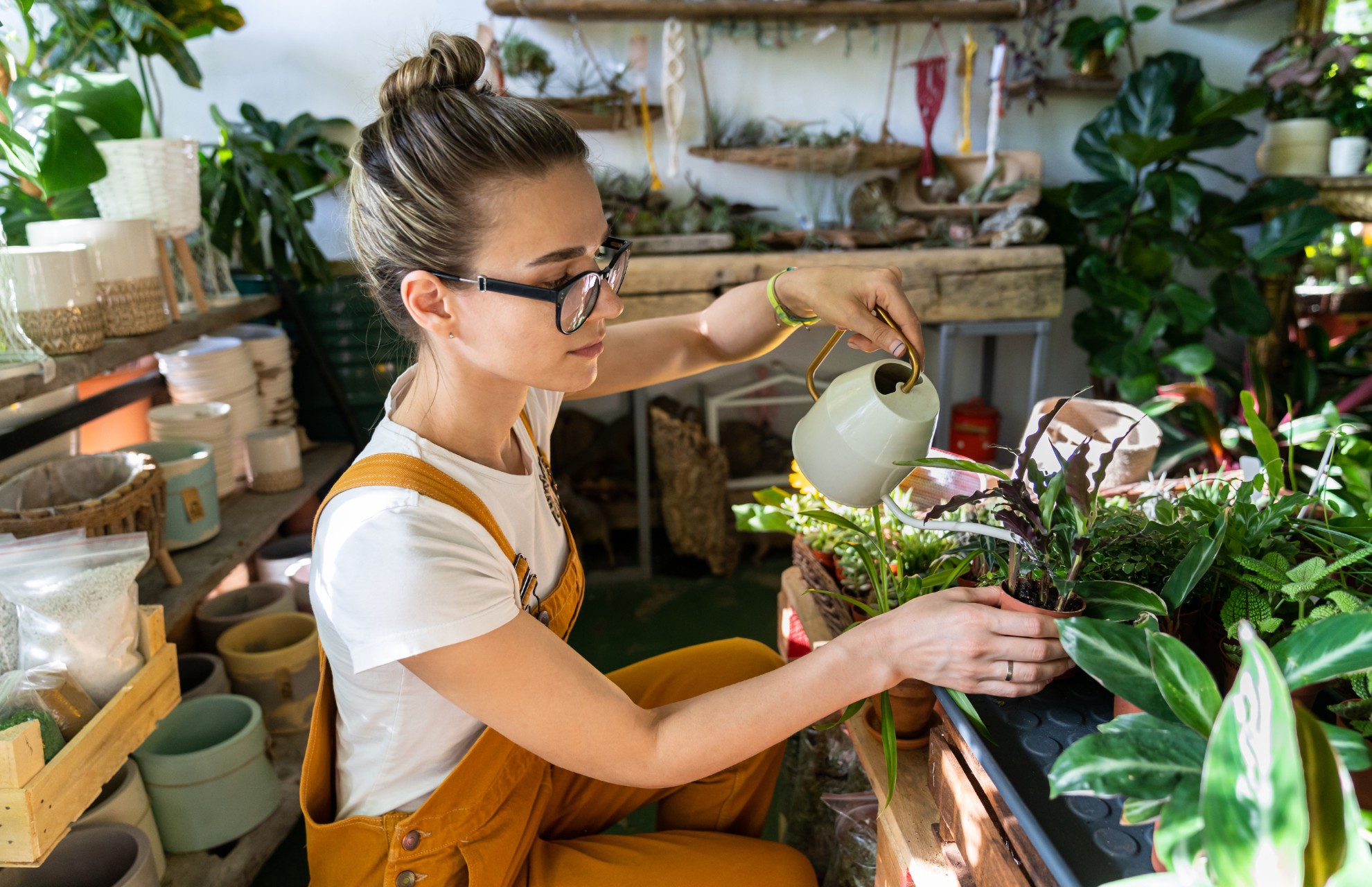
In today’s fast-paced world, creating a tranquil space at home has become increasingly important for one’s mental health. One way to do so is by installing a DIY indoor garden to create a refreshing and calming atmosphere in your living space.
Wondering about how to start building one? Our article will show how to start an indoor garden in 6 simple steps. Along with decoration ideas to spruce it up, you’ll have a beautiful green haven indoors in no time.
1. Plan Your Indoor Garden
Planning your indoor garden is a crucial step to ensuring its overall success, feasibility and sustainability. From your available space to the type of garden to build, there are several key considerations you need to evaluate.
Select the space
First, assess the space in your home where you intend to create your DIY indoor garden. Consider factors such as lighting conditions, water access, temperature and available floor or wall space for your plants.
Decide which type of garden you want to build
Define the purpose of your garden. Do you want to build a decorative garden featuring plants with visual appeal or a therapeutic space filled with lush greenery? You should also take into account the amount of space and growing conditions of your garden. Here are some different types of indoor gardens you may consider building.
- Container gardens
Container gardens offer flexibility as these plants are individually potted and can be placed throughout the house. You may choose to place different pots of plants together to create pockets of green space around the house.
- Vertical gardens
For small spaces, you may wish to consider vertical gardens to maximise your wall space. These gardens feature plants growing on trellis or vertical garden systems, making an attractive green backdrop.
- Hydroponic gardens
Hydroponics gardens are systems of cultivating plants without soil. Instead of relying on traditional soil-based methods, it utilises a nutrient-rich water solution to provide essential minerals directly to the plant roots.
2. Choose the Right Type of Plants
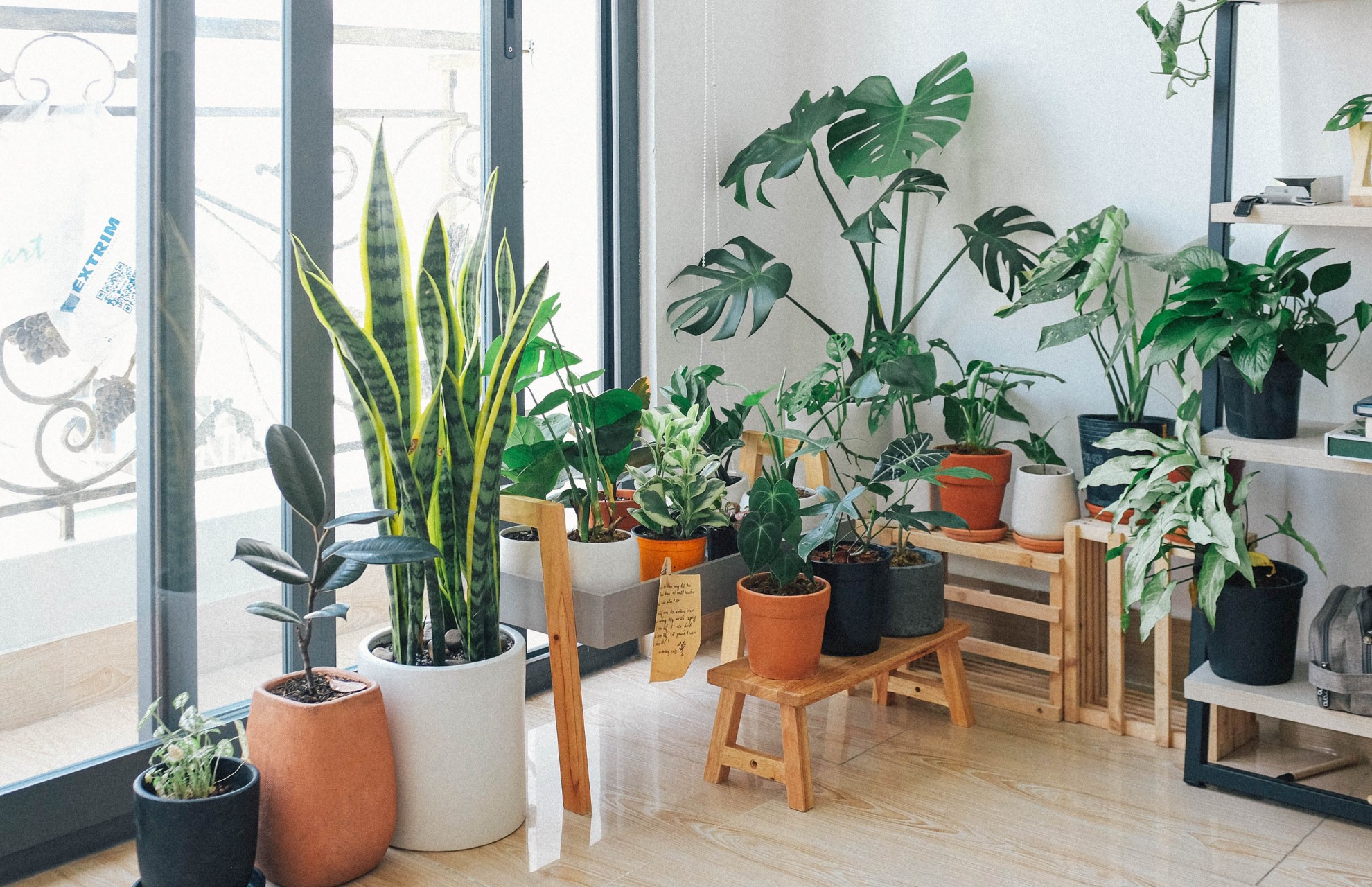
Once you know the type of garden you want, you can begin selecting specific plants for it. Your selection has to take into account several factors, especially the existing conditions in the allocated space. Choose plants that can thrive in these conditions as it will determine their survivability.
For example, if your space lacks natural light, you may consider plants like pothos, peace lily or snake plant. If your garden receives plenty of direct sunlight, Cacti, succulents, croton and monstera are some plants that will thrive well.
3. Gather the Necessary Supplies
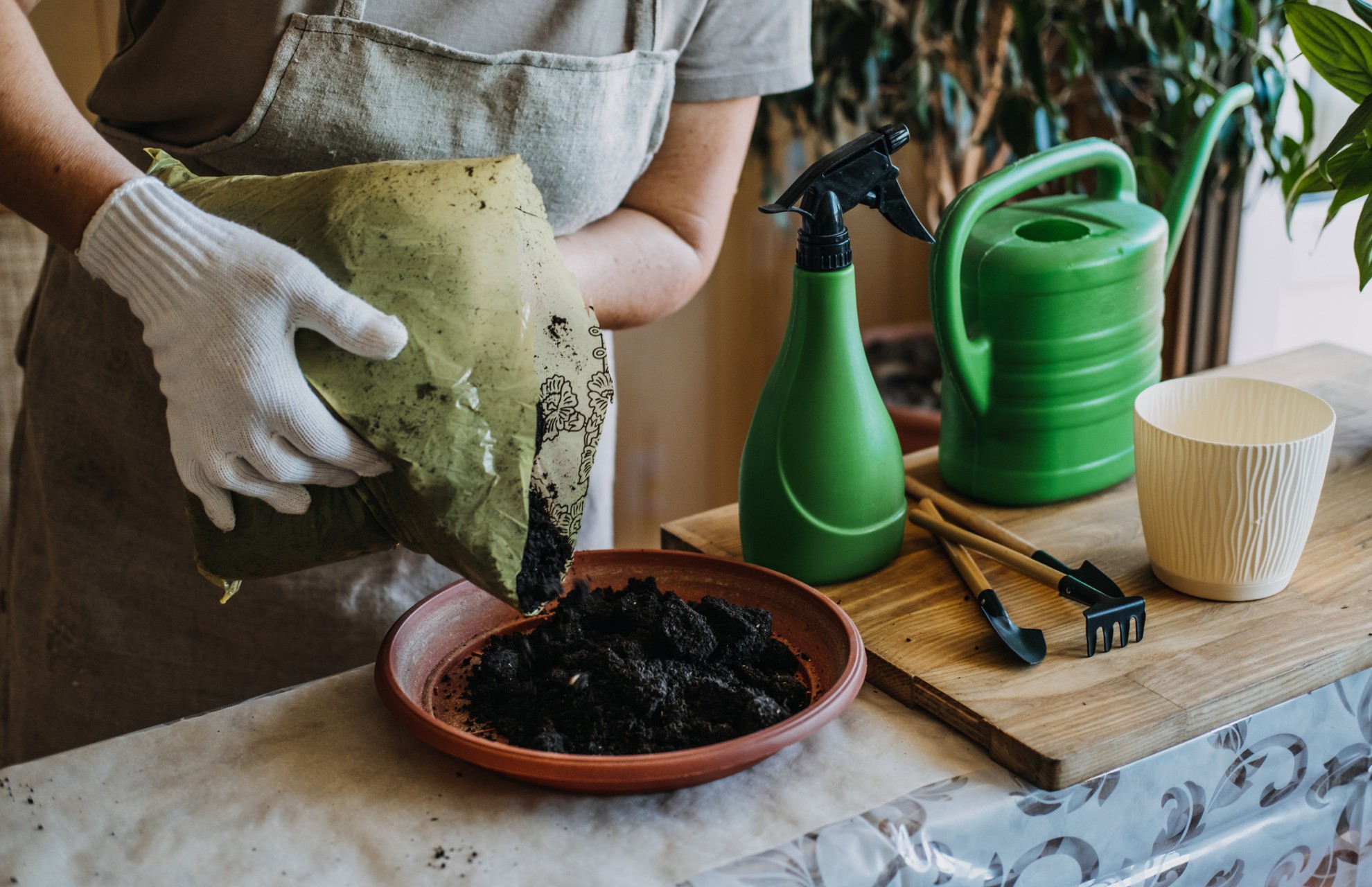
On top of choosing the right plants, having the right tools and materials is essential too. They can improve the efficiency and safety of your plant care routine.
Pots and containers
There are many different types of pots and containers suitable for indoor gardening, whether in plastic, ceramic or terracotta. The key is choosing one that suits your aesthetic preferences, while also offering adequate space and sufficient drainage for optimal plant growth.
For seeds or seedlings, you won’t need too much space, so a 3-4″ pot size should be sufficient. But for plants with root balls, you should use a container that’s double the size of the root ball.
Tip!
Root rot often occurs in waterlogged soil, where the plant’s roots are submerged in water, leading to fungal infections. To avoid this, go for containers with holes at the bottom for proper drainage.
The right soil type
Choosing the right soil or medium is vital in ensuring proper drainage and healthy plant growth. Some plants thrive in sandy soil, while others prefer loamy or clayey soils. Hence, you should always research the soil preferences of the plants you intend to grow.
For example, cacti and succulents require sandy soil for good drainage to prevent waterlogging. Edible herbs like basil, lettuce and parsley prefer loamy soils that can retain adequate amounts of water and nutrients. By understanding the preferences of your plants, you can choose the right soil type that provides an optimal growing environment.
Seeds or seedlings
Selecting healthy specimens from reputable sources such as your local nurseries and garden centres increases your chances of building a flourishing indoor garden.
For seeds, you can check the information on the seed packets they come in. Review the seed’s origin, germination rate and growing requirements to see if you have the right conditions to grow it. If you’re starting with seedlings, choose healthy, robust ones with sturdy stems and vibrant green leaves to ensure a successful transplantation.
Watering tools
Watering tools are essential in maintaining proper hydration for your indoor garden. Depending on your plant’s needs, you may consider using different watering tools.
For example, you may use watering cans for plants requiring consistent moisture and spray bottles for those preferring drier conditions. For hanging plants that are hard to reach, you can use a watering wand.
Other supplies
Other gardening supplies such as fertilisers, pruning shears and humidity monitors can also help to maintain your indoor garden. Fertilisers provide useful nutrients to support plant growth and development. A good pair of pruning shears can help to shape the plant and encourage healthier growth.
Should your plants require specific humidity levels, use a humidity monitor to track the moisture levels in your garden. This will alert you to adjust the placement of your plants accordingly.
4. Control the Environment
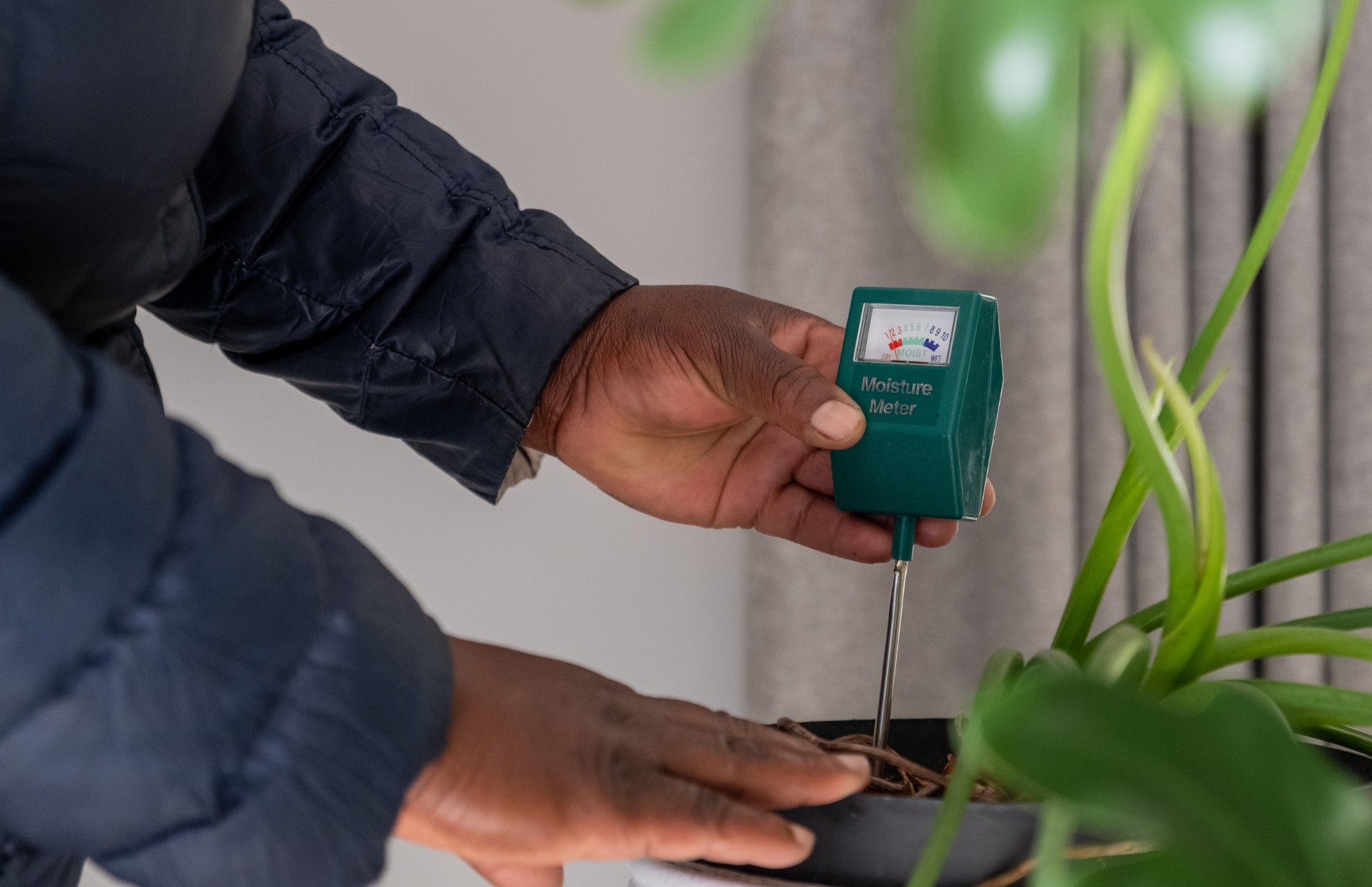
Controlling the environment of your green space is crucial for successful plant growth. Here are 3 key factors to consider.
Light control
Light influences plant growth and development. It’s also essential for photosynthesis and plants can only produce the energy they need to grow healthily with adequate lighting.
Insufficient lighting often results in straggly plants with pale leaves and reduced flowering. Therefore, if your garden doesn’t receive enough natural light, try introducing LED grow lights into the space. They mimic sunlight and emit a light spectrum in the range of 400 to 700 nanometres which help plants to photosynthesise.
Temperature control
Different plant species require different temperature conditions to achieve optimal growth.
Common indoor plants typically thrive within a temperature range of 24°C and 29°C. To control the temperature of the environment, you may consider using electric heat mats to regulate soil temperature. Alternatively, you can relocate your plants to areas that offer the right conditions.
Water management
Maintaining proper soil moisture is important for plant health, which can be affected by factors, such as humidity and pot drainage. Overwatering can lead to root rot and oxygen deprivation, while underwatering causes the plants to dry up. Therefore, it’s critical to regularly monitor soil moisture levels and provide water whenever the top layer is dry.
You can also insert moisture indicators into the soil for a more accurate reading of the moisture level. Additionally, installing an automatic drip system to supply water to your plants at designated intervals ensures they receive timely hydration. With proper water management, your plants will receive enough water and nutrients for healthy growth.
5. Care and Maintenance
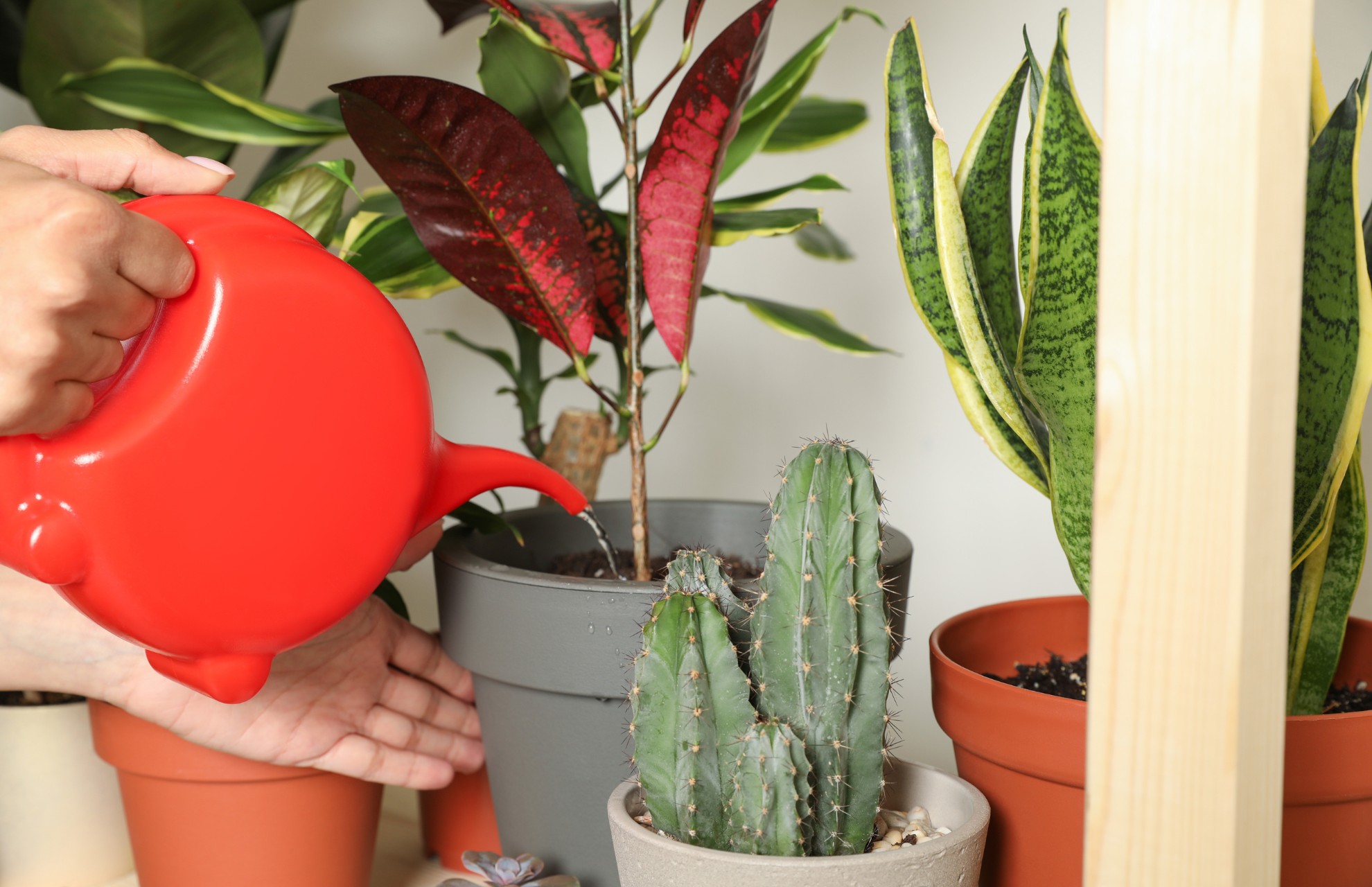
After your garden is successfully set up, you have to maintain it regularly to ensure the plants grow healthily. This involves a range of tasks, from monitoring plant growth to checking soil conditions.
Regular observations allow you to catch any signs of trouble early on and take appropriate action. For example, chewed leaves, discolouration or wilting can be signs of pest infestation or diseases. You should promptly remove infected plants exhibiting these symptoms and administer proper treatment.
Checking the soil regularly to determine its moisture level is also important. As moisture affects plant health directly, regular monitoring allows you to adjust your watering schedule accordingly to prevent under or overwatering.
Other than moisture, periodic fertilisation of your plants is key to maintaining a healthy soil balance. Over time, plants extract nutrients from the soil to grow, hence the nutrient levels in the soil can become depleted. Fertilisers help to replenish these nutrients to ensure your plants continue to grow healthily.
Tip!
Fertilisers come in different forms, such as liquids, granules, tablets or slow-release pellets. You should always follow the recommended dosage as indicated on the labels of these fertilisers, as too much of it can burn the plant.
6. Harvest and Prune
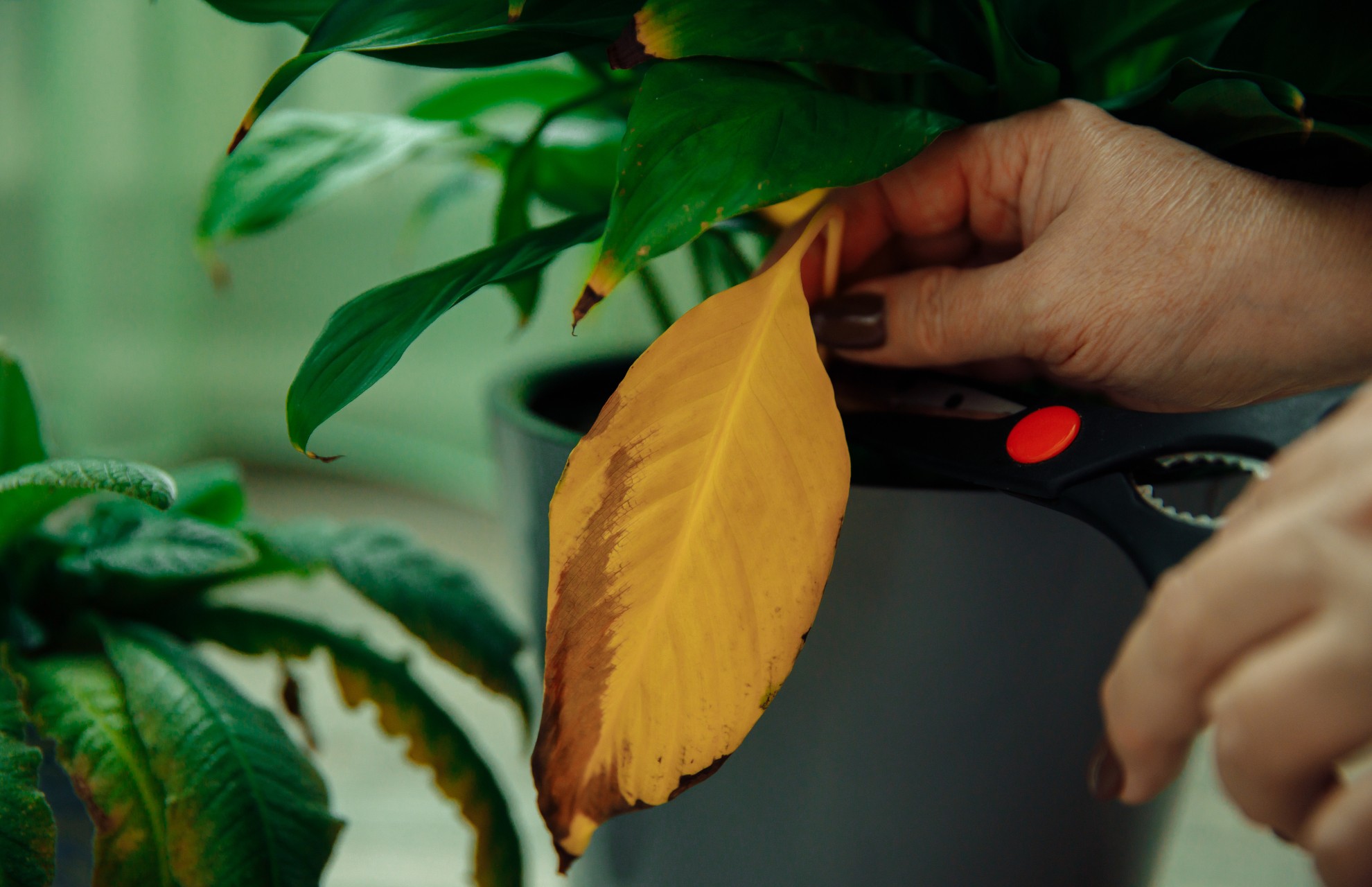
Harvesting and pruning are important practices to ensure the health and productivity of your plants.
Harvesting your herbs and vegetables regularly can help to encourage continuous production. It can also prevent fruits from over-ripening, affecting their taste and quality. Should they grow to full maturity without being harvested, the plant may stop producing altogether.
Regular pruning can maintain the health and appearance of your plants. The ideal timing for pruning is at the start of a growing season or after a flowering cycle. Removing the dead or damaged parts not only prevents the spread of diseases but also stimulates new growth.
Decoration Ideas for Your Green Space
Other than adding natural greens, there are various ways you can enhance the visual appeal of your indoor garden. Take a look below for some creative decoration ideas to spruce up your green sanctuary.
Add splashes of colour
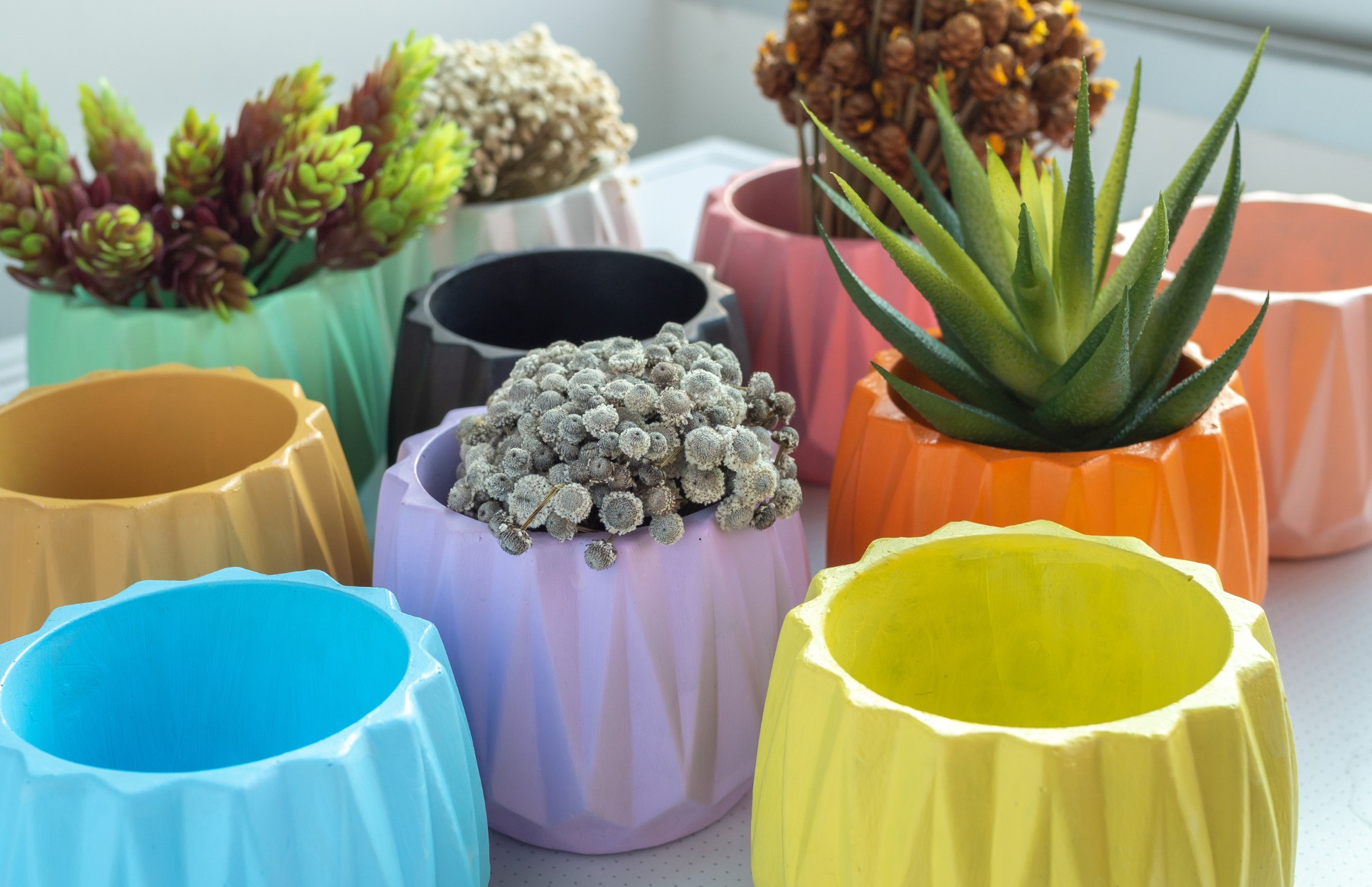
Instead of keeping your indoor garden naturally green, add splashes of vibrant colours to bring your personality into it. You can do so by painting your plant pots, walls and even shelves with complementary colours to revive the green space.
Alternatively, incorporate design ideas that can accentuate the green colour palette in your garden. You can match the walls with colours associated with nature, such as Saxony Blue or Sea Breeze, to enhance the sense of harmony in your green oasis.
Nippon Paint offers a wide array of interior paints that can be used to enhance your garden. Simply find your colour in our extensive range of paint colours and add a colourful touch to the aesthetic of your green space.
Add art

Nature-inspired paintings, botanical prints or handmade art pieces can add a touch of sophistication to the space. Sculptures or artistic installations can also serve as focal points to create visual interest and express your artistic tendencies.
Add lanterns and fairy lights
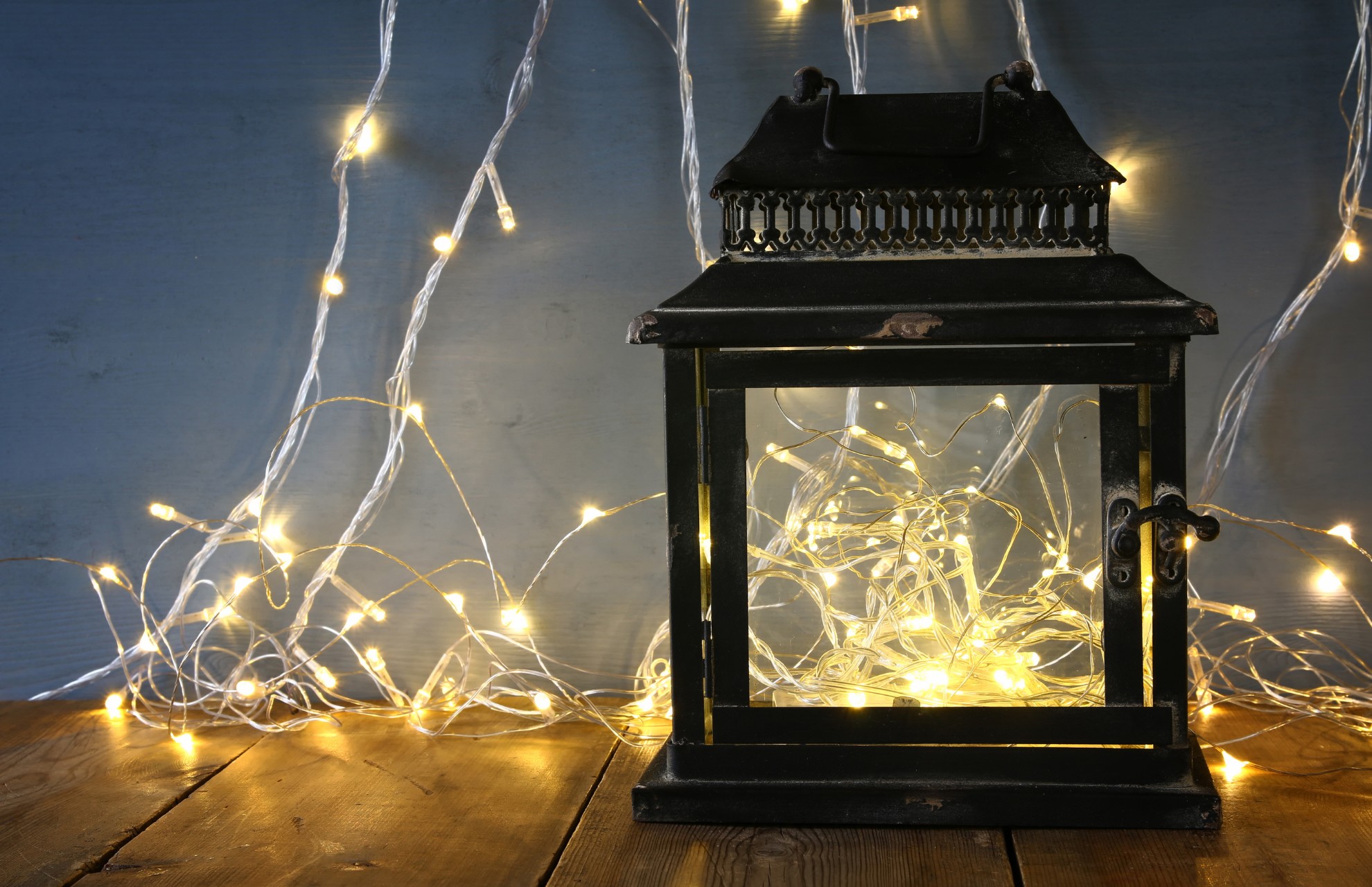
Create a magical atmosphere surrounding your indoor garden by adding lanterns or fairy lights. Lanterns that come in intricate designs or whimsical shapes exude an ethereal glow, transforming your garden into an enchanting realm. Fairy lights can be draped along walls and shelves to lend a warm, inviting ambience to your green sanctuary.
Use hanging planters
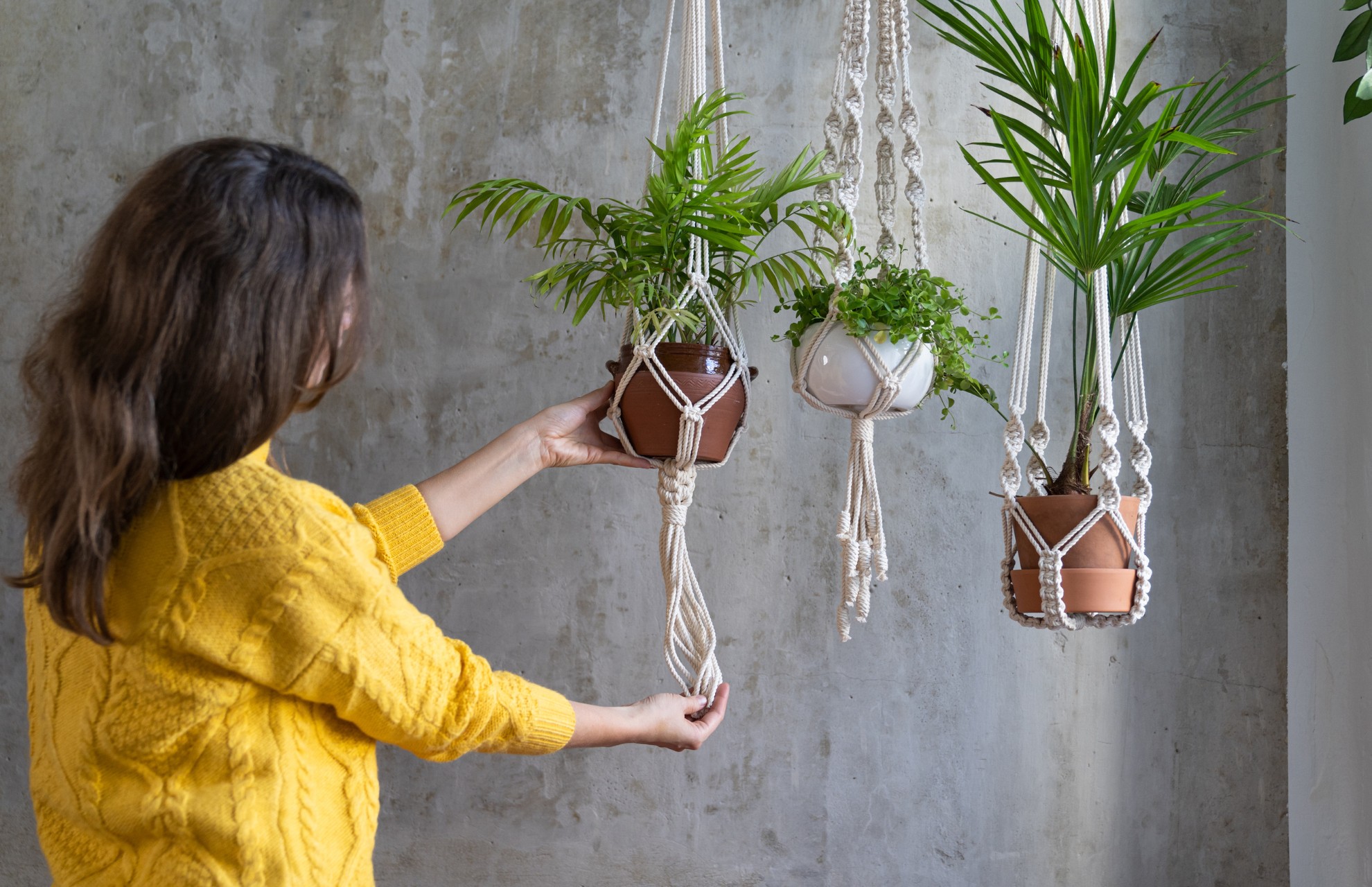
Maximise the vertical space in your indoor garden with hanging planters. These suspended vessels with trailing plants can be visually captivating without taking up much space. Choose unique and stylish planters for an eye-catching display of lush greenery and natural beauty.
Use vintage containers
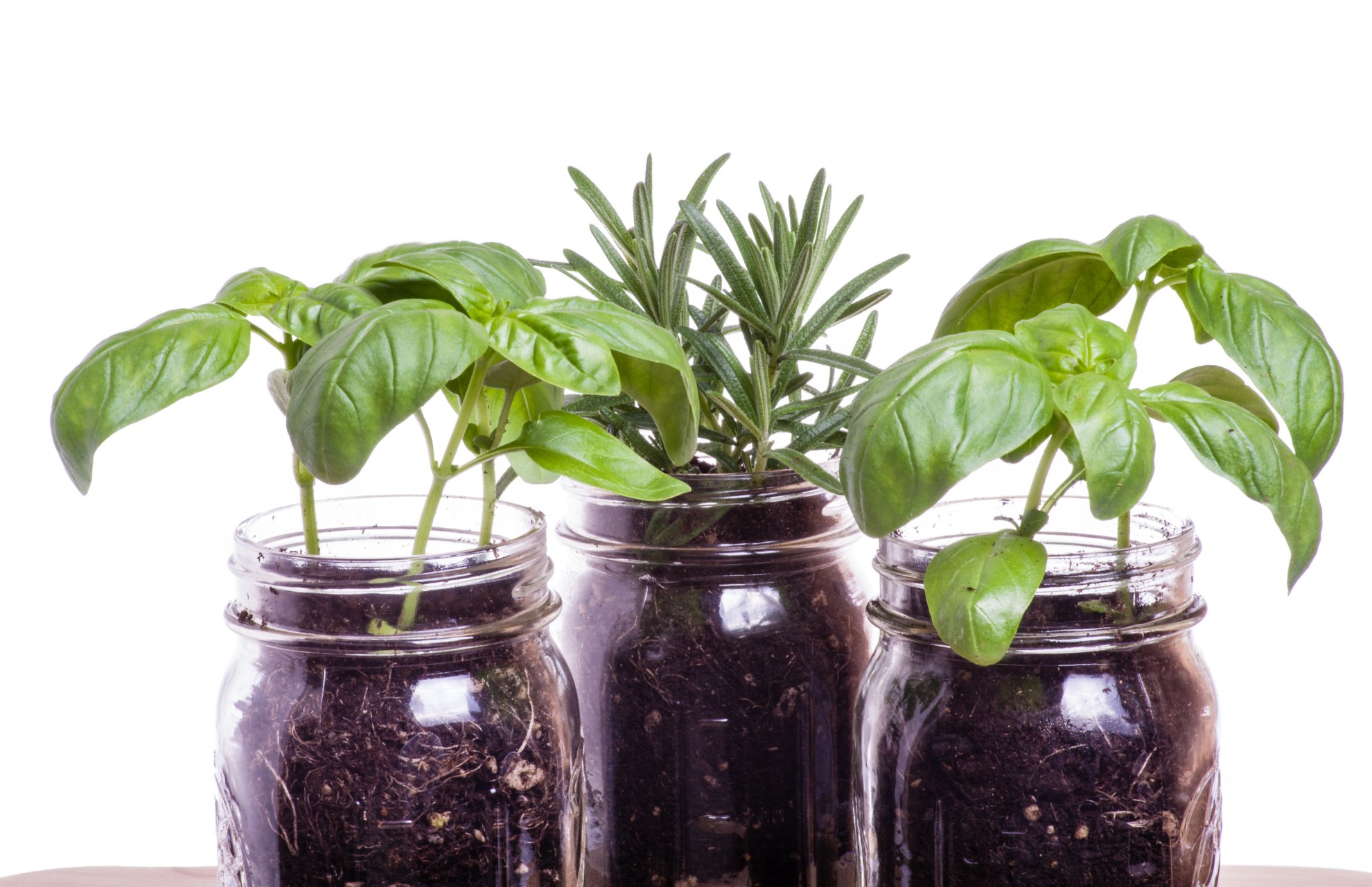
Rather than purchasing traditional pots, try repurposing vintage containers such as antique teacups and mason jars as charming plant holders. These unique containers bring a sense of nostalgia to your indoor garden, giving your space a distinct and eclectic charm.
FAQs About DIY Indoor Gardens
How often should I water my indoor plants?
The frequency of watering your indoor plants depends on the requirements of your plants and the growth conditions of your garden. While it’s essential to water them regularly, you should be careful not to overwater them as well. The best way to gauge is by checking the moisture level of your potting medium.
You can do so by manually inserting your finger into the soil. If it feels dry, it’s a sign that watering is needed. Otherwise, it’s best to wait a bit longer before watering. To avoid getting your finger dirty, you can also use a moisture indicator to monitor the soil’s moisture level.
How do I prevent pests in my indoor garden?
Start by maintaining the cleanliness of your indoor garden. Remove fallen leaves and clear dead plant matter to avoid attracting pests. You can also apply neem oil which contains Azadirachtin that’s effective in deterring pests.
How can I maximise a small space for an indoor garden?
You can make use of the vertical space by creating a vertical garden with wall-mounted shelves and hanging planters. Choose climbing plants such as ivy or pothos to create a lush green display without taking up valuable floor space.
Macrame plant hangers or wall-mounted plant pockets are also useful options to maximise a small space. Hang them at different heights for an interesting visual display to add depth to your indoor garden.
What vegetables should not be planted next to each other?
Certain plants can impact each other’s growth when placed together. Take for instance tomatoes and corn, which are both prone to worms and fungus. Growing them side by side can lead to extensive damage to both crops.
Vegetables in the brassica family like cabbage and broccoli are also not recommended to be planted near those in the nightshade family, such as eggplant and bell pepper. The former can inhibit the latter’s growth and are susceptible to pests like cabbage worms and aphids.
6 Ways to Attain Your Dream Muji Style Home and Create a Zen Haven
